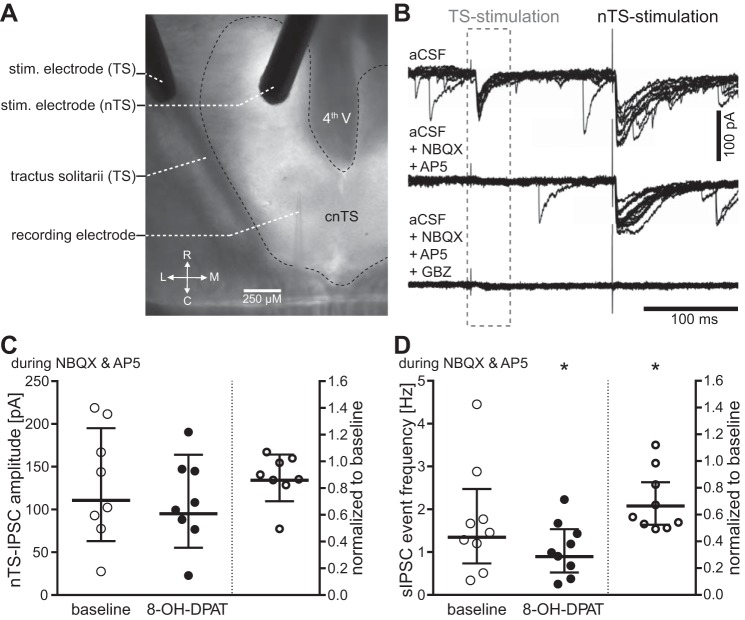Fig. 5.
Activation of 5-HT1ARs decreases inhibitory nTS network activity. A: two bipolar stimulating electrodes were used to evoke monosynaptic glutamatergic EPSCs in the recorded neuron from visceral afferents within the TS, and monosynaptic GABAergic inhibitory postsynaptic currents (IPSCs) from the nTS network in the medial portion of the nTS. stim, stimulating. B: representative recordings showing TS-EPSCs and nTS-IPSCs upon stimulation. Note, due to our recording conditions, glutamatergic and GABAergic currents are downward (negative) deflecting. Application of 1,2,3,4-tetrahydro-6-nitro-2,3-dioxo-benzo[f]quinoxaline-7-sulfonamide disodium (NBQX) and dl-2-amino-5-phosphonovaleric acid (AP5) eliminated all excitatory currents. At the end of an experiment, IPSCs were verified by their blockade with GABAzine (GBZ) in the recording solution. C and D: individual responses to 5-HT1AR activation with 8-OH-DPAT are presented as raw values (left in each panel) and normalized to baseline (right, baseline defined as “1”) for nTS-IPSC amplitudes (C) and spontaneous IPSC (sIPSC) event frequency (D). While the group nTS-IPSC amplitude did not change (n = 9; P = 0.11), spontaneous event frequency significantly decreased with activation of 5-HT1AR (n = 9; *P < 0.05). Bars show geometric mean with 95% CI.

